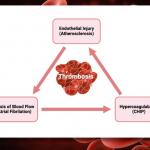
Understanding How Blood Flows in the Legs
Your veins have one main job — to carry blood back to the heart. Tiny one-way valves inside your veins keep blood flowing upward against gravity. When these valves become weak or damaged, blood can pool in the lower legs, causing pressure, swelling, and visible color changes in the veins and surrounding skin.
When blood isn’t flowing properly, it can lose oxygen and appear darker — turning veins a noticeable blue, purple, or even brownish color under the skin.
Why Does Blood in the Legs Look Dark?
There are several possible reasons for dark-colored veins or blood pooling in your legs. The most common causes include:
1. Venous Insufficiency
This occurs when vein valves stop working effectively, allowing blood to flow backward and collect in the legs. Over time, this chronic pooling increases vein pressure, leading to darker veins, swelling, and aching legs.
Symptoms of venous insufficiency include:
-
Dark blue or purple veins (varicose or spider veins)
-
Swelling in the ankles or calves
-
Heaviness or tiredness in the legs
-
Skin discoloration or thickening around the ankles
-
Cramping or throbbing pain after standing
2. Varicose Veins
Varicose veins are enlarged, twisted veins that develop when blood backs up. Because the blood is deoxygenated and moves slowly, it appears dark and bulging beneath the skin. They are often found on the thighs, calves, or behind the knees.
Varicose veins are more than a cosmetic concern — they can signal underlying circulation issues that worsen without treatment.
Find a Varicose Vein Clinic Near You
3. Poor Circulation
Standing or sitting for long periods can reduce circulation and make veins appear darker. Over time, stagnant blood can contribute to the development of spider veins and varicose veins.
Regular movement, exercise, and elevating your legs can help boost blood flow, but persistent dark veins may require medical attention.
4. Skin Changes from Long-Term Vein Disease
If venous insufficiency isn’t treated, the increased pressure can cause skin changes like:
-
Brown or rust-colored patches near the ankles
-
Thickened or leathery skin
-
Itching, flaking, or ulcer formation
These changes occur because trapped blood releases iron pigments (hemosiderin) into the surrounding tissue, darkening the skin — a clear sign of advanced vein disease.
5. Blood Clots or Deep Vein Thrombosis (DVT)
In some cases, dark discoloration in one leg may signal a blood clot. DVT occurs when a clot forms in a deep vein, blocking circulation. This is a serious condition that requires immediate medical care.
Seek emergency help if you notice:
-
Sudden leg pain or swelling
-
Warmth, redness, or dark discoloration in one leg
-
Shortness of breath or chest pain
Can You Improve the Color of Dark Veins?
Yes — once the cause of poor circulation is treated, blood flow improves, and the dark color often fades. The key is to address the root cause, not just the visible symptom.
Proven treatment options include:
-
Endovenous Laser Therapy (EVLT): Minimally invasive procedure that closes diseased veins so blood can reroute to healthy ones.
-
Ultrasound-Guided Sclerotherapy: A gentle injection therapy that closes small varicose or spider veins.
-
VenaSeal™ or Radiofrequency Ablation: Innovative treatments that seal damaged veins and restore normal blood flow.
All of these treatments are performed in-office at USA Vein Clinics — typically in under an hour with no hospital stay required.
When to See a Vein Specialist For Dark Blood in Legs
You should consult a specialist if you notice:
-
Veins that appear dark, bulging, or twisted
-
Leg pain, heaviness, or fatigue
-
Swelling that worsens through the day
-
Skin discoloration or open sores near your ankles
Ignoring these symptoms can allow vein disease to progress and increase your risk for more serious complications. Early treatment not only improves the appearance of your legs but also supports long-term circulatory health.
Conclusion for the Blood In Your Legs May be Dark
Dark blood in your legs isn’t just about appearance — it’s your body’s way of signaling that something may be wrong with your circulation.
Conditions like varicose veins and chronic venous insufficiency can cause blood to pool, darken, and damage surrounding tissue over time.
Fortunately, you don’t have to live with discomfort or visible veins. At USA Vein Clinics, our board-certified vein specialists offer non-surgical, minimally invasive treatments that restore healthy blood flow and help your legs look and feel better again.
Take the first step today.
Schedule a consultation online and find relief from painful, dark, or swollen veins.





